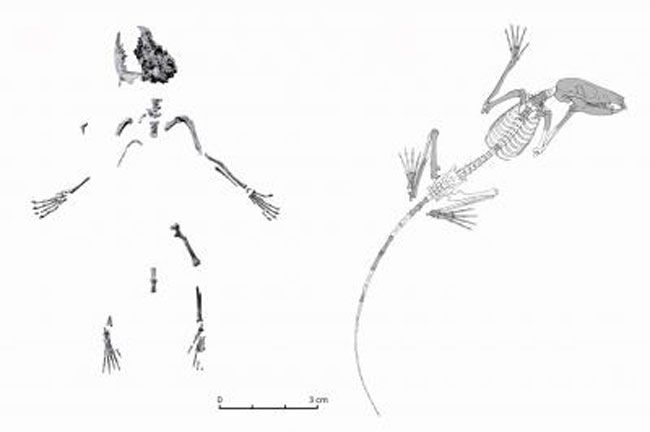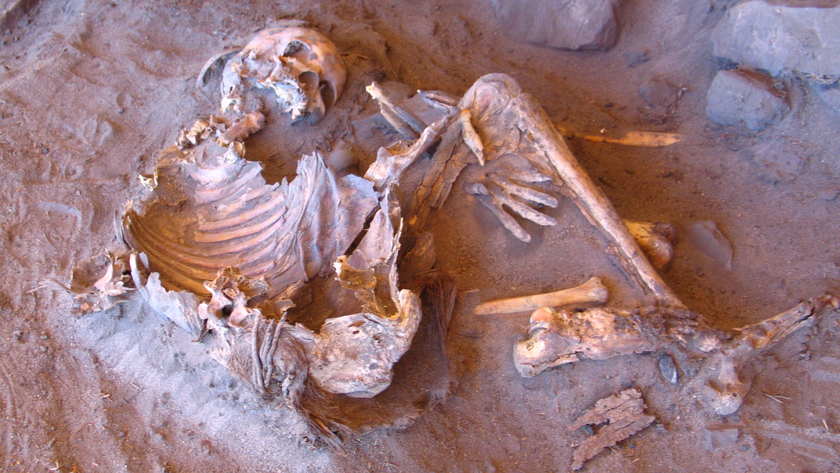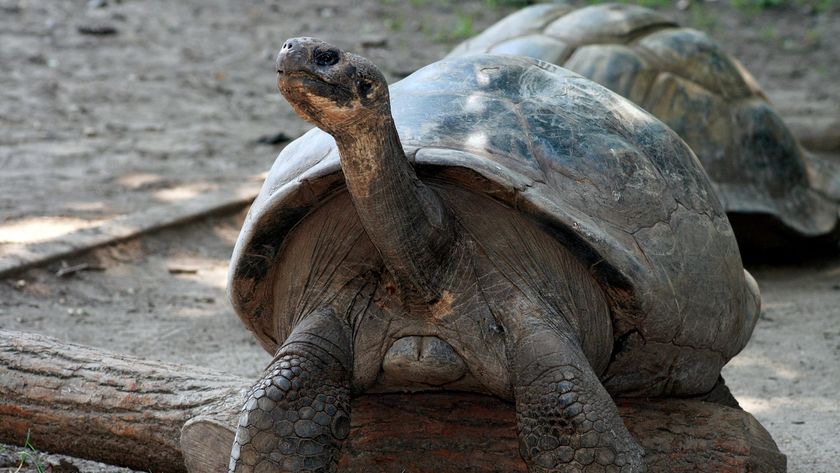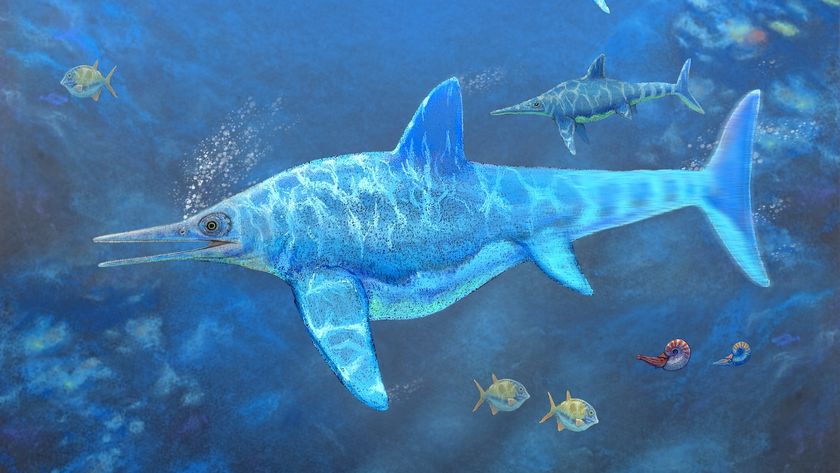Two Skeletons Push Primates Closer to Dinosaur Era

Two newly reported complete skeletons of primates show that this group that includes humans' closest relatives such as chimps and lemurs is 10 million years older than scientists previously thought, pushing our earliest ancestors even closer to the Age of Dinosaurs.
This discovery, the most primitive known skeleton of a primate, extends the primate record by a big chunk of geologic time and changes the prevailing view of how primate traits evolved.
"It's sort of a window into what the earliest primates would have looked like," said study author Jonathan Bloch of the Florida Museum of Natural History.
Nowhere to Fit In
Bloch and his colleagues studied the new fossil and some similar modern and early primate skeletons to pinpoint their location on the primate family tree. The branches of that tree, which includes humans, chimps, gorillas, baboons, and lemurs, can all be traced back 55 million years ago, when the first undisputed primates appear in the fossil record.
Dinosaurs went extinct 10 million years before that, and some paleontologists suspected that primates emerged not long after the reptile beasts disappeared, based on fossil traces of a group of small mammals called plesiadapiforms. Early studies labeled these animals primitive primates, but in recent years, they were reclassified as flying lemurs, a small, gliding mammal native to Southeast Asia that is not actually a lemur, but is a close primate relative.
"There's always been an enormous amount of debate as to what these things are," Bloch told Livescience, referring to plesiadapiforms.
Sign up for the Live Science daily newsletter now
Get the world’s most fascinating discoveries delivered straight to your inbox.
One reason for the debate was that scientists, until now, lacked a complete view of the creatures. Like most primates other than modern humans, plesiadapiforms are rather small and skeletons of smaller animals erode more easily--only teeth and a few isolated bones were had been found before.
"There's only so much that you can say about teeth," Bloch said.
Expanding the Family
Bloch recently caught a lucky break when he made the rare discovery of nearly complete skeletons of two plesiadapiform species, now named Ignacius clarkforkensis and Dryomomys szalayi, embedded in limestone outside Yellowstone National Park.
By analyzing the skeletons and comparing them to more than 85 modern and extinct primate species, the researchers showed that plesiadapaforms look a lot more like primates than paleoanthropologists had ?imagined and look nothing like their flying lemur cousins, Bloch said. The findings are detailed in the Jan. 23 issue of Proceedings of the National Academy of Sciences.
When examining the skeletons, Bloch and his colleagues looked for several telling features of primates: a bone that covers important structures in the ear, teeth that are critical to a diet richer in fruits and plants than insects and skeletons adapted for tree-living.
"Primates tend to have really kind of mobile joints, so that they can wrap their hands and feet around branches," co-author Eric Sargis of Yale University said. "The whole skeleton of primates is really kind of re-packaged for tree living."
D. szalayi had several of these primate features: it was small, about the size of a mouse; its teeth show that it mostly ate fruits; and it had long fingers and claws perfect for climbing around in trees.
"Our analysis shows that they're the closest relatives of modern primates, and therefore, we've kind of brought them back into the order primates," Sargis said.
Because these archaic primates exist in the fossil record long before the appearance of the first true primates 55 million years ago, they are most primitive primates known.
A New Picture Forms
Primates must have acquired their traits gradually, because plesiadapiforms have some, but not all, of the characteristics of primates, Bloch and Sargis said.
"In the past, people had hypothesized that all of these kinds of primate features evolved as a single complex of features at one time, whereas what we're finding is throughout those first 10 million years of primate evolution, these features were evolving piecemeal, kind of one-by-one, accruing through time," Sargis said.
Though plesiadapiforms aren't flying lemurs, as was once the prevailing opinion, the Bloch and Sargis skeletal analysis shows that flying lemurs and another modern, non-primate mammal, the tree shrew, are primates' closest living relatives. DNA studies of all three types of mammals--primates, flying lemurs, and tree shrews--confirm Bloch and Sargis's finding.
"So all three of those groups," Sargis said, "you can trace back to a single common ancestor."

Andrea Thompson is an associate editor at Scientific American, where she covers sustainability, energy and the environment. Prior to that, she was a senior writer covering climate science at Climate Central and a reporter and editor at Live Science, where she primarily covered Earth science and the environment. She holds a graduate degree in science health and environmental reporting from New York University, as well as a bachelor of science and and masters of science in atmospheric chemistry from the Georgia Institute of Technology.












